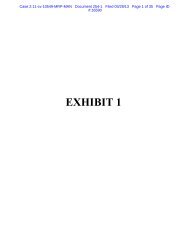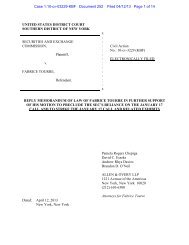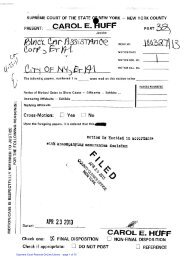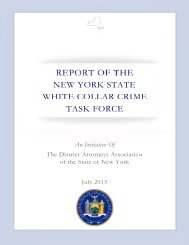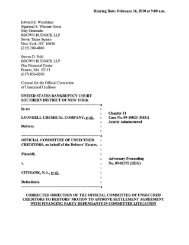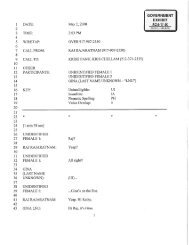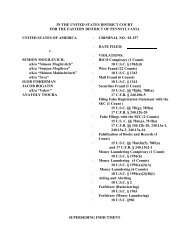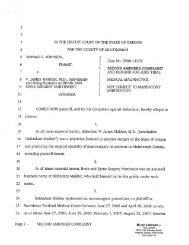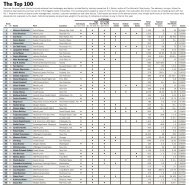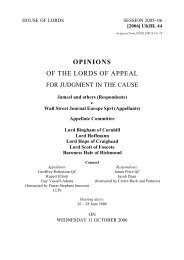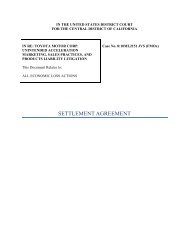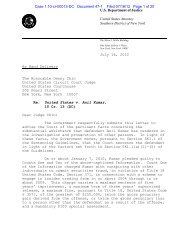Salz Review - Wall Street Journal
Salz Review - Wall Street Journal
Salz Review - Wall Street Journal
You also want an ePaper? Increase the reach of your titles
YUMPU automatically turns print PDFs into web optimized ePapers that Google loves.
<strong>Salz</strong> <strong>Review</strong><br />
An Independent <strong>Review</strong> of Barclays’ Business Practices<br />
60<br />
classified the two funds in July 2007 as appropriate for risk-averse investors and in<br />
August began selling accordingly. Concerns were raised within Barclays in November<br />
2007 over whether the risk categorisation of the funds was accurate, and the rating<br />
was changed in December 2007. By then, more than 12,000 customers had invested<br />
almost £700 million in the two funds. In late 2008, Barclays stopped selling both<br />
funds. By 1 April 2009, the value of the Global Balanced Income Fund had fallen by<br />
48% over the previous 12 months, and the Global Cautious Income Fund by 29%. 97<br />
6.30 In January 2011, the FSA fined Barclays £7.7 million for “failing to take reasonable<br />
care to ensure the suitability of its advice” with respect to the Aviva funds.<br />
Underlying failures were identified in training materials, sales briefs, product<br />
brochures, monitoring of sales and lack of action after compliance had identified<br />
potentially unsuitable sales. However, the FSA said that Barclays had not<br />
“deliberately or recklessly contravened regulatory requirements” and had been open<br />
and co-operative during its investigation. The FSA estimated that Barclays would<br />
have to pay over £60 million in compensation to investors. Since then, Barclays has<br />
modified the sales and advice process, as well as increasing training for advisers. 98<br />
6.31 There was a similar incident in Spain in 2009 when the Comisión Nacional del<br />
Mercado de Valores (CNMV), as part of a review of financial market activities in a<br />
number of Spanish financial institutions, found deficiencies in Barclays’ product<br />
classification process. Following action to deal with the issues, CNMV fined Barclays<br />
€600,000 in December 2012 for under-rating the risk in €16.5 million of bonds sold<br />
between January and March of 2008. The regulatory rules in Spain are different from<br />
those in the UK. We consider this breach is mainly a matter of product design,<br />
combined with a failure to classify it correctly for risk purposes.<br />
Operational Failures<br />
6.32 Regulators also require financial services organisations to operate in ways that protect<br />
clients’ money and help monitor transactions so that they can be reviewed<br />
subsequently. Barclays has twice been fined for failure to observe such regulations,<br />
apparently as a result of underinvestment in its systems and processes.<br />
Client Money Segregation<br />
6.33 Financial institutions must protect customers’ assets by segregating them from their<br />
own. When Lehman Brothers collapsed in September 2008, and customers were<br />
unable to withdraw their deposits, its failure to segregate client money from its own<br />
was widely publicised. As a result, regulators intensified their focus on segregation<br />
arrangements.<br />
6.34 In 2009, Barclays identified a failure to segregate client money and launched an<br />
internal review to identify the cause and resolve the issue. The FSA considered this<br />
to have been a “serious breach” though “not deliberate”. In January 2011, it fined<br />
Barclays Capital £1.12 million for “failing to protect and segregate on an intra-day<br />
97 Source: Bloomberg data.<br />
98 FSA, “Final Notice to Barclays”, 14 January 2011.



